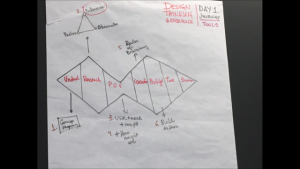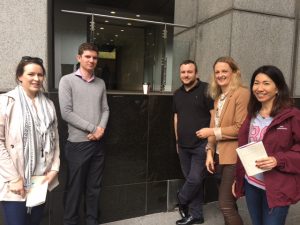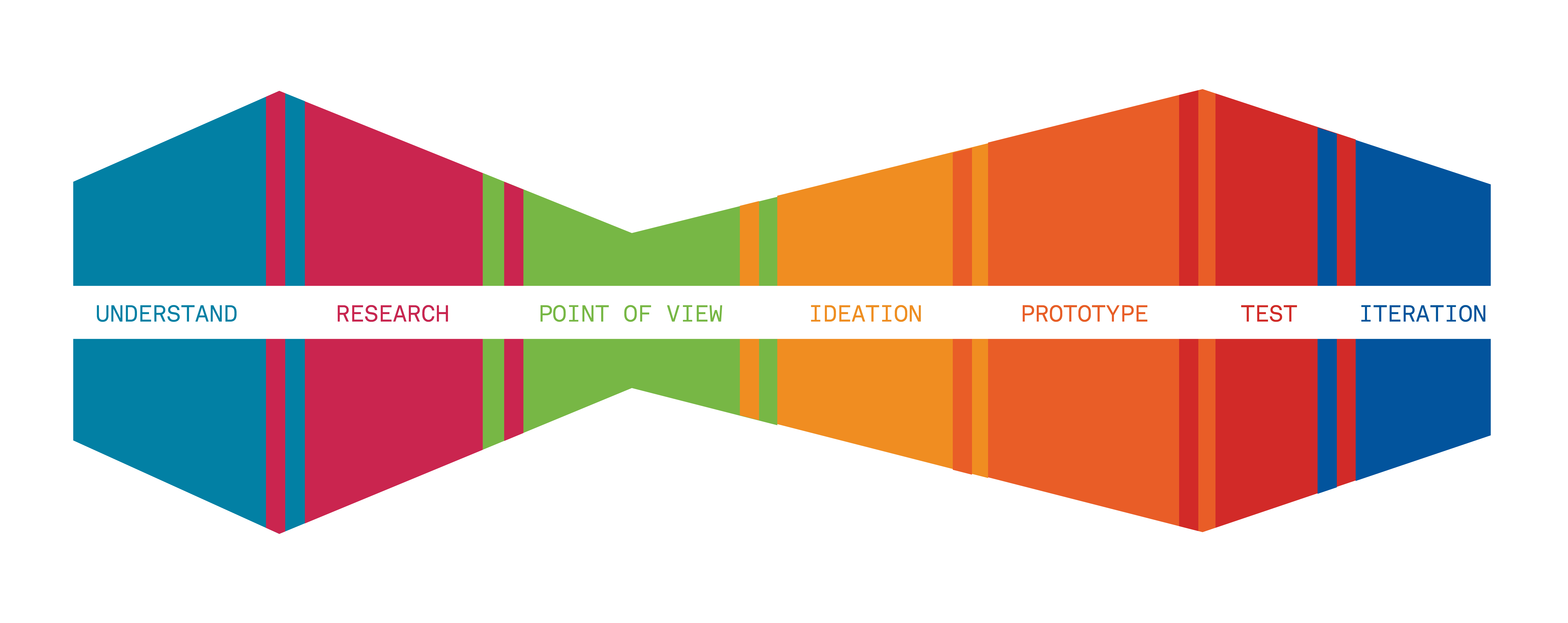Recently I attended a 3-day Design Thinking course. Many of my colleagues are analytical types, I like to think of myself as a ‘humanist’.
Design thinking involves”building up” ideas, with no limits, during a “brainstorming” phase. This helps reduce fear of failure in the participants and encourages input and participation from a wide variety of sources in the ideation phases. The phrase “thinking outside the box” describes one goal of the brainstorming phase and is encouraged, since this can aid in the discovery of creative and innovative solutions.

The Echos School of Design Thinking introduced me to the problem-solving concept known as the ‘double diamond’. It involves 7 steps and both convergent and divergent thinking. Within these seven steps, problems can be framed, the right questions can be asked, more ideas can be created, and the best answers can be chosen. The steps aren’t linear; can occur simultaneously and be repeated.
Case Study
The following case study will illustrate each step of the process.
Problem
Our class was split into 4 teams of 4. We each had to develop a solution to the problem ‘How to promote cycling in the city’.
- Understand
There are 3 ways to properly understand a problem. Ask, observe, experience. So my team mates went into the streets of Sydney. Two of them interviewed both cyclists and non-cyclists to see how they felt about the issue.

Another observed the state of play. How many cyclists, what challenges do they face? What challenges do they create? And I got to experience cycling in Sydney. I hired a bike and spent the next hour cycling through Australia’s largest city.



